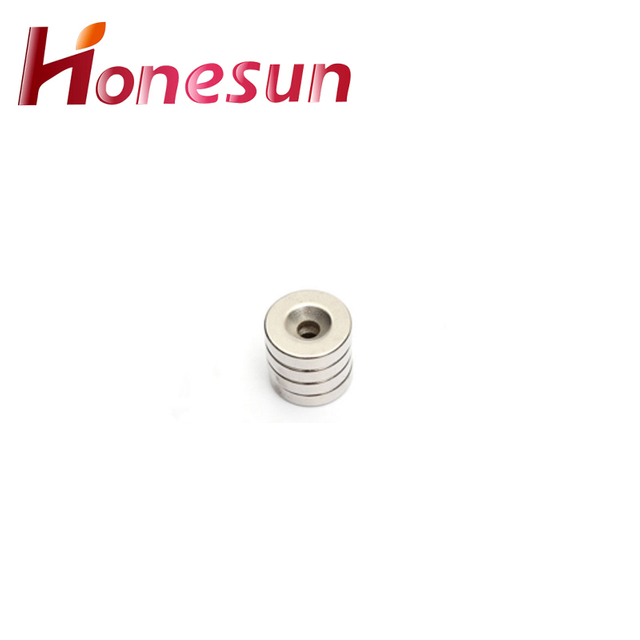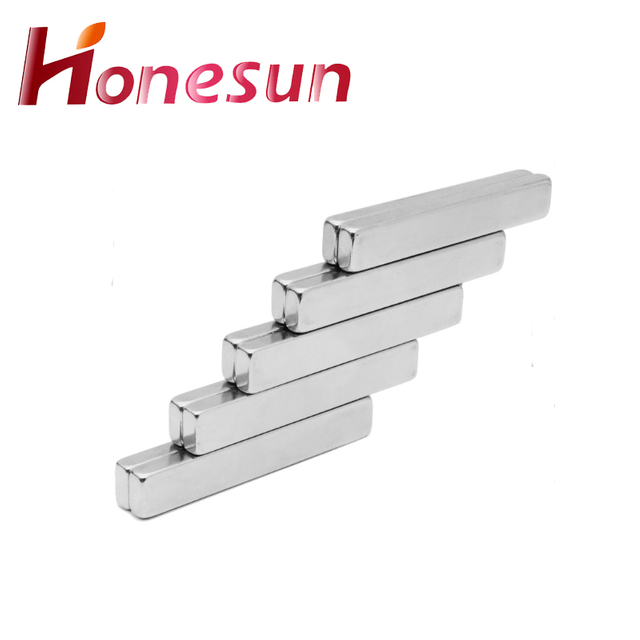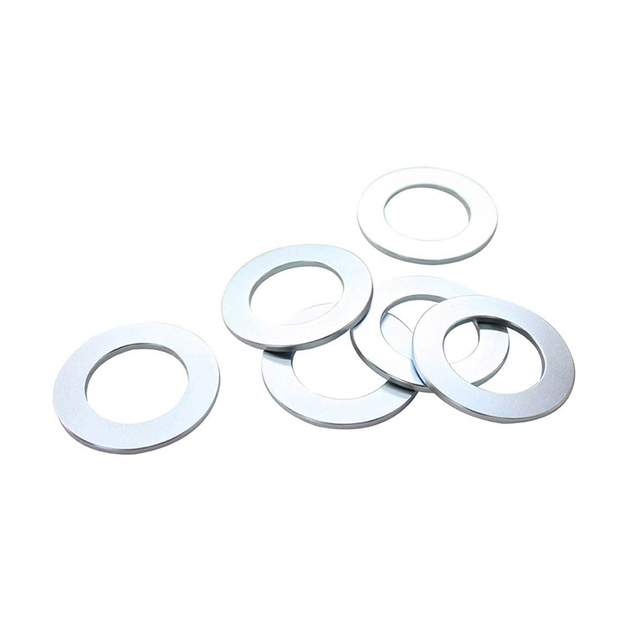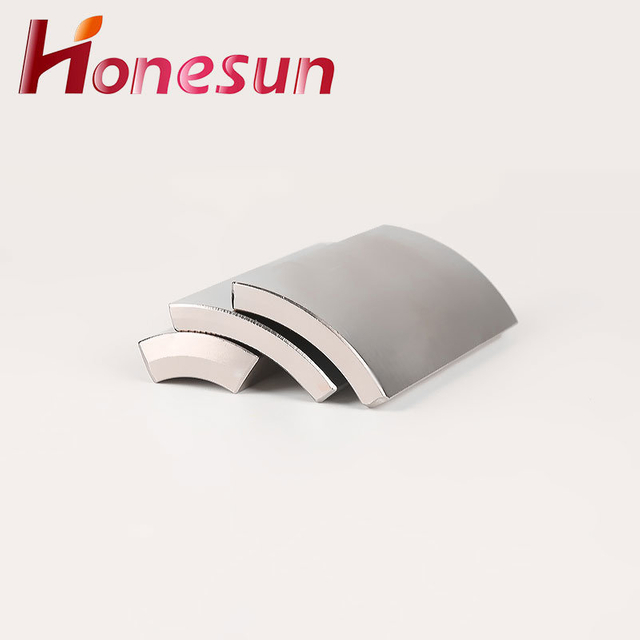| Availability: | |
|---|---|
| Quantity: | |
| Product Name | teflon coated neodymium magnets |
| Material | Neodymium Magnet/Permanet Magnet |
| Size | Various kinds or according to customers' request |
| Shape | Disc, Block, Ring, Countersunk, Segment, Trapezoid, Irregular shapes are available, Or Customized Shapes |
| Grade | N35-N52, N35M-N50M, N33H-N48H, N30SH-N35SH and so on |
| Tolerance in size | +/-0.05 mm |
| Direction of magnetisation | Through the thickness or through the diameter |
| Applications | 1. Electronic areas: speakers, headphones, acoustics, sensors and so on. 2. Motor areas: generators, servo motors, micro-motors, vibration motors, elevator motor and so on. 3. Clean Tech Energy: Water flow enhancement, wind turbines. 4. Health care: MRI, medical treatment equipment. 5. Other industries: electric doors and windows, electric vehicle, electric bicycles, computer, phone, boxes, magnetic tools, notebook and so on |



1.How do teflon coated neodymium magnets work?
We have established a good reputation and reliable partnerships within the teflon coated neodymium magnets industry. Neodymium magnets are permanent magnets made from an alloy of neodymium, iron, and boron. They are the strongest type of permanent magnet available and are used in a variety of applications. Neodymium magnets work by creating a strong magnetic field that attracts ferromagnetic materials, such as iron, nickel, and cobalt. The magnetic field is created when the electrons in the atoms of the neodymium alloy align in the same direction. This alignment creates a strong magnetic field that can attract ferromagnetic materials from a distance.
2.Can teflon coated neodymium magnets be custom-made for specific applications?
Yes, neodymium magnets can be custom-made for specific applications. Depending on the application, the size, shape, and strength of the magnet can be tailored to meet the specific requirements.
3.How do you store teflon coated neodymium magnets?
Neodymium magnets should be stored in a dry, temperature-controlled environment away from other magnets or magnetic materials. They should also be stored away from moisture, heat, and direct sunlight. It is also important to keep them away from any ferrous materials, as these can cause the magnets to become magnetized and attract each other.

4.Are teflon coated neodymium magnets affected by external magnetic fields?
We adhere to the principle of quality first and have a complete production quality management system and quality inspection process. Yes, neodymium magnets can be affected by external magnetic fields. They can be attracted to or repelled by other magnets, and their magnetic fields can be weakened or strengthened by other magnetic fields.
5.What are the environmental impacts of mining Neodymium for magnets?
The environmental impacts of mining neodymium for magnets can include air and water pollution, land degradation, and the destruction of habitats. Mining neodymium can also lead to the release of hazardous chemicals, such as sulfur dioxide, nitrogen oxides, and carbon dioxide, into the atmosphere. Additionally, the mining process can cause soil erosion, which can lead to the destruction of vegetation and wildlife habitats. Finally, the mining process can also lead to the release of radioactive materials, which can be hazardous to human health.
6.About teflon coated neodymium magnets production skills training
Neodymium magnets are a type of rare earth magnet that is made from an alloy of neodymium, iron, and boron. They are the strongest type of permanent magnet available and are used in a variety of applications, from consumer electronics to industrial machinery. Neodymium magnets production skills training is designed to teach participants the basics of producing neodymium magnets. The training covers topics such as the properties of neodymium magnets, the manufacturing process, and safety considerations. Participants will also learn about the different types of neodymium magnets and their uses. The training is designed to give participants the knowledge and skills needed to produce neodymium magnets in a safe and efficient manner.

7.How do teflon coated neodymium magnets compare to traditional ceramic magnets?
Neodymium magnets are much stronger than traditional ceramic magnets. They are made from an alloy of neodymium, iron, and boron and are the strongest type of permanent magnet available. Neodymium magnets are much smaller than ceramic magnets and can generate significantly higher magnetic fields. They are also more expensive than ceramic magnets.
8.How do you demagnetize a Neodymium Magnet?
We focus on teamwork and communication to achieve common goals, We attach great importance to this detail. Neodymium magnets can be demagnetized by heating them to a temperature of around 200°C (392°F) for a few minutes. This will cause the magnet to lose its magnetic properties. It is also possible to demagnetize a neodymium magnet by exposing it to a strong alternating magnetic field.
9.What are the limitations of using teflon coated neodymium magnets?
As one of the top teflon coated neodymium magnets manufacturers in China, we take this very seriously. 1. Neodymium magnets are brittle and can easily break or chip if dropped or handled roughly. 2. Neodymium magnets can corrode if exposed to moisture or other corrosive elements. 3. Neodymium magnets can be difficult to machine and require special tools and techniques. 4. Neodymium magnets can be difficult to demagnetize and require special tools and techniques. 5. Neodymium magnets can be expensive compared to other types of magnets.

10.Are teflon coated neodymium magnets affected by extreme temperatures?
Yes, neodymium magnets can be affected by extreme temperatures. They can become brittle and crack if exposed to temperatures above 175°C (347°F). They can also lose their magnetism if exposed to temperatures below -45°C (-49°F).
11.How have teflon coated neodymium magnets revolutionized the manufacturing industry?
Neodymium magnets have revolutionized the manufacturing industry by providing a powerful, lightweight, and cost-effective alternative to traditional ferrite magnets. Neodymium magnets are used in a variety of applications, from motors and generators to sensors and medical equipment. They are also used in the production of consumer electronics, automotive components, and industrial machinery. Neodymium magnets are more powerful than ferrite magnets, allowing for smaller, lighter, and more efficient designs. They are also more cost-effective, making them a popular choice for manufacturers.
12.How do you recycle teflon coated neodymium magnets?
We focus on our customers' needs and strive to meet their expectations, so we take this very seriously. Neodymium magnets are not typically recycled, as they are made from rare earth metals and are difficult to separate and process. It is best to reuse them or donate them to a local school or organization that can use them.

13.How do teflon coated neodymium magnets contribute to renewable energy sources?
Neodymium magnets are used in many renewable energy sources, such as wind turbines and solar panels. They are used to generate electricity from the rotation of the turbine blades or the movement of the sun’s rays. Neodymium magnets are also used in electric motors, which are used to power electric vehicles. Additionally, they are used in generators to convert mechanical energy into electrical energy.
14.How do teflon coated neodymium magnets contribute to the aerospace industry?
Neodymium magnets are used in a variety of aerospace applications, including in electric motors, actuators, and sensors. They are also used in navigation systems, guidance systems, and propulsion systems. Neodymium magnets are highly resistant to corrosion and can withstand extreme temperatures, making them ideal for use in aerospace applications. Additionally, their high magnetic strength makes them ideal for use in motors and actuators, allowing for more efficient operation and greater power output.
15.What is the maximum pulling force of a Neodymium Magnet?
We focus on innovation and continuous improvement to maintain a competitive advantage. The maximum pulling force of a Neodymium magnet depends on the size and shape of the magnet, but generally ranges from 10 to 200 pounds.

16.Can teflon coated neodymium magnets be used in high-temperature environments?
Our teflon coated neodymium magnets products undergo strict quality control to ensure customer satisfaction. No, neodymium magnets are not suitable for use in high-temperature environments. They can become permanently demagnetized if exposed to temperatures above their Curie temperature, which is typically around 80-200°C (176-392°F).
| Product Name | teflon coated neodymium magnets |
| Material | Neodymium Magnet/Permanet Magnet |
| Size | Various kinds or according to customers' request |
| Shape | Disc, Block, Ring, Countersunk, Segment, Trapezoid, Irregular shapes are available, Or Customized Shapes |
| Grade | N35-N52, N35M-N50M, N33H-N48H, N30SH-N35SH and so on |
| Tolerance in size | +/-0.05 mm |
| Direction of magnetisation | Through the thickness or through the diameter |
| Applications | 1. Electronic areas: speakers, headphones, acoustics, sensors and so on. 2. Motor areas: generators, servo motors, micro-motors, vibration motors, elevator motor and so on. 3. Clean Tech Energy: Water flow enhancement, wind turbines. 4. Health care: MRI, medical treatment equipment. 5. Other industries: electric doors and windows, electric vehicle, electric bicycles, computer, phone, boxes, magnetic tools, notebook and so on |



1.How do teflon coated neodymium magnets work?
We have established a good reputation and reliable partnerships within the teflon coated neodymium magnets industry. Neodymium magnets are permanent magnets made from an alloy of neodymium, iron, and boron. They are the strongest type of permanent magnet available and are used in a variety of applications. Neodymium magnets work by creating a strong magnetic field that attracts ferromagnetic materials, such as iron, nickel, and cobalt. The magnetic field is created when the electrons in the atoms of the neodymium alloy align in the same direction. This alignment creates a strong magnetic field that can attract ferromagnetic materials from a distance.
2.Can teflon coated neodymium magnets be custom-made for specific applications?
Yes, neodymium magnets can be custom-made for specific applications. Depending on the application, the size, shape, and strength of the magnet can be tailored to meet the specific requirements.
3.How do you store teflon coated neodymium magnets?
Neodymium magnets should be stored in a dry, temperature-controlled environment away from other magnets or magnetic materials. They should also be stored away from moisture, heat, and direct sunlight. It is also important to keep them away from any ferrous materials, as these can cause the magnets to become magnetized and attract each other.

4.Are teflon coated neodymium magnets affected by external magnetic fields?
We adhere to the principle of quality first and have a complete production quality management system and quality inspection process. Yes, neodymium magnets can be affected by external magnetic fields. They can be attracted to or repelled by other magnets, and their magnetic fields can be weakened or strengthened by other magnetic fields.
5.What are the environmental impacts of mining Neodymium for magnets?
The environmental impacts of mining neodymium for magnets can include air and water pollution, land degradation, and the destruction of habitats. Mining neodymium can also lead to the release of hazardous chemicals, such as sulfur dioxide, nitrogen oxides, and carbon dioxide, into the atmosphere. Additionally, the mining process can cause soil erosion, which can lead to the destruction of vegetation and wildlife habitats. Finally, the mining process can also lead to the release of radioactive materials, which can be hazardous to human health.
6.About teflon coated neodymium magnets production skills training
Neodymium magnets are a type of rare earth magnet that is made from an alloy of neodymium, iron, and boron. They are the strongest type of permanent magnet available and are used in a variety of applications, from consumer electronics to industrial machinery. Neodymium magnets production skills training is designed to teach participants the basics of producing neodymium magnets. The training covers topics such as the properties of neodymium magnets, the manufacturing process, and safety considerations. Participants will also learn about the different types of neodymium magnets and their uses. The training is designed to give participants the knowledge and skills needed to produce neodymium magnets in a safe and efficient manner.

7.How do teflon coated neodymium magnets compare to traditional ceramic magnets?
Neodymium magnets are much stronger than traditional ceramic magnets. They are made from an alloy of neodymium, iron, and boron and are the strongest type of permanent magnet available. Neodymium magnets are much smaller than ceramic magnets and can generate significantly higher magnetic fields. They are also more expensive than ceramic magnets.
8.How do you demagnetize a Neodymium Magnet?
We focus on teamwork and communication to achieve common goals, We attach great importance to this detail. Neodymium magnets can be demagnetized by heating them to a temperature of around 200°C (392°F) for a few minutes. This will cause the magnet to lose its magnetic properties. It is also possible to demagnetize a neodymium magnet by exposing it to a strong alternating magnetic field.
9.What are the limitations of using teflon coated neodymium magnets?
As one of the top teflon coated neodymium magnets manufacturers in China, we take this very seriously. 1. Neodymium magnets are brittle and can easily break or chip if dropped or handled roughly. 2. Neodymium magnets can corrode if exposed to moisture or other corrosive elements. 3. Neodymium magnets can be difficult to machine and require special tools and techniques. 4. Neodymium magnets can be difficult to demagnetize and require special tools and techniques. 5. Neodymium magnets can be expensive compared to other types of magnets.

10.Are teflon coated neodymium magnets affected by extreme temperatures?
Yes, neodymium magnets can be affected by extreme temperatures. They can become brittle and crack if exposed to temperatures above 175°C (347°F). They can also lose their magnetism if exposed to temperatures below -45°C (-49°F).
11.How have teflon coated neodymium magnets revolutionized the manufacturing industry?
Neodymium magnets have revolutionized the manufacturing industry by providing a powerful, lightweight, and cost-effective alternative to traditional ferrite magnets. Neodymium magnets are used in a variety of applications, from motors and generators to sensors and medical equipment. They are also used in the production of consumer electronics, automotive components, and industrial machinery. Neodymium magnets are more powerful than ferrite magnets, allowing for smaller, lighter, and more efficient designs. They are also more cost-effective, making them a popular choice for manufacturers.
12.How do you recycle teflon coated neodymium magnets?
We focus on our customers' needs and strive to meet their expectations, so we take this very seriously. Neodymium magnets are not typically recycled, as they are made from rare earth metals and are difficult to separate and process. It is best to reuse them or donate them to a local school or organization that can use them.

13.How do teflon coated neodymium magnets contribute to renewable energy sources?
Neodymium magnets are used in many renewable energy sources, such as wind turbines and solar panels. They are used to generate electricity from the rotation of the turbine blades or the movement of the sun’s rays. Neodymium magnets are also used in electric motors, which are used to power electric vehicles. Additionally, they are used in generators to convert mechanical energy into electrical energy.
14.How do teflon coated neodymium magnets contribute to the aerospace industry?
Neodymium magnets are used in a variety of aerospace applications, including in electric motors, actuators, and sensors. They are also used in navigation systems, guidance systems, and propulsion systems. Neodymium magnets are highly resistant to corrosion and can withstand extreme temperatures, making them ideal for use in aerospace applications. Additionally, their high magnetic strength makes them ideal for use in motors and actuators, allowing for more efficient operation and greater power output.
15.What is the maximum pulling force of a Neodymium Magnet?
We focus on innovation and continuous improvement to maintain a competitive advantage. The maximum pulling force of a Neodymium magnet depends on the size and shape of the magnet, but generally ranges from 10 to 200 pounds.

16.Can teflon coated neodymium magnets be used in high-temperature environments?
Our teflon coated neodymium magnets products undergo strict quality control to ensure customer satisfaction. No, neodymium magnets are not suitable for use in high-temperature environments. They can become permanently demagnetized if exposed to temperatures above their Curie temperature, which is typically around 80-200°C (176-392°F).
Honesun Industrial Co., Ltd. focuses on designing, researching, developing, manufacturing and selling Magnets and Magnetic Assemblies. With more than 15 years' rich experience and considerate services.we have been recognized as a reliable.



